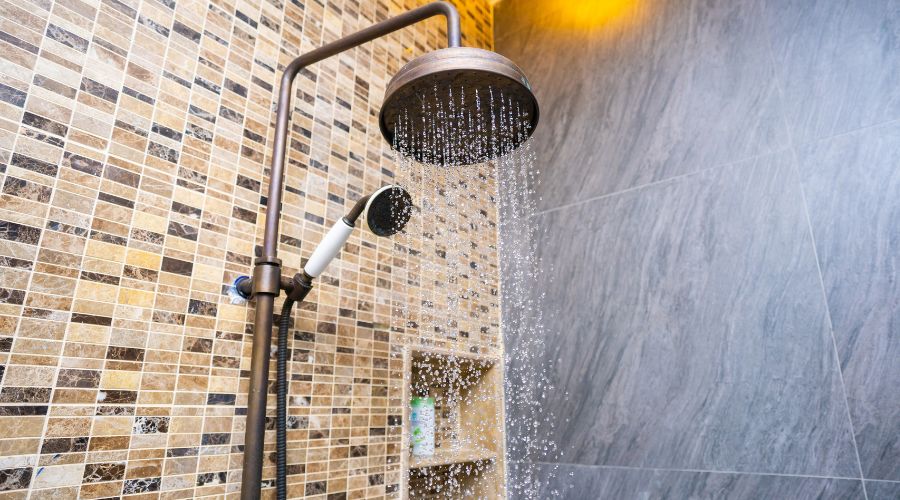As someone who loves taking long, hot showers, I know firsthand how frustrating it can be when the water pressure isn’t as strong as I’d like it to be. This can be especially frustrating when you’re trying to rinse shampoo out of your hair or wash soap off your body.
The simple answer to this question is, yes, the shower head can affect the water pressure. In this article, we will explore the various factors that influence water pressure, the different types of shower heads available, and methods to increase or decrease water pressure.
How Shower Heads Affect Water Pressure
The type of shower head you use can have a significant impact on the water pressure in your shower. In general, shower heads fall into two categories: low-flow and high-flow.
Low-flow shower heads are designed to conserve water, typically using less than 2.5 gallons per minute. While this is great for the environment and can help save you money on your water bill, it can also result in lower water pressure. By limiting the amount of water that is flowing through the shower head, low-flow shower heads can reduce the overall pressure of the water.
High-flow shower heads, on the other hand, are designed to provide a stronger water flow. These shower heads typically use more than 2.5 gallons per minute and are often preferred by people who want a more powerful shower experience.
In addition to the type of shower head, the design of the shower head can also impact water pressure. Some shower heads are designed to provide a wider, more dispersed spray, while others are designed to provide a more targeted, concentrated spray. A wider spray may feel more luxurious, but it can also result in lower water pressure.
What You Can Do to Increase Water Pressure
If you’re not happy with the current water pressure in your shower, there are a few things you can do to increase the pressure.
1. Clean Your Shower Head
Over time, mineral deposits from hard water can build up in your shower head, clogging the tiny holes that water flows through. This can result in lower water pressure. To clean your shower head, simply unscrew it from the shower arm and soak it in a mixture of equal parts white vinegar and water for a few hours. After soaking, rinse the shower head and screw it back onto the shower arm. This can help remove any buildup and improve water pressure.
2. Replace Your Shower Head
If your shower head is old or outdated, it may be time to replace it with a newer, higher-flow shower head. Look for shower heads that provide a strong, targeted spray for maximum water pressure.
3. Increase Water Flow
If you prefer a more powerful shower experience, you may want to consider increasing the overall water flow to your shower. This can be done by installing a new, larger diameter shower head pipe or increasing the size of the water supply line to your shower. However, this can be a more advanced plumbing project, so it’s typically best to consult with a professional plumber before making any changes to your water supply.
4. Remove Flow Restrictors
Many modern shower heads come with flow restrictors installed to help conserve water. While this is great for the environment and your water bill, it can also result in lower water pressure. If your shower head has a flow restrictor, it may be possible to remove it to increase water flow. However, be aware that removing a flow restrictor may also void the warranty on your shower head and could potentially damage your plumbing, so proceed with caution.
Conclusion
In summary, the type of shower head you use can have a significant impact on the water pressure in your shower. Low-flow shower heads are designed to conserve water but can result in lower water pressure, while high-flow shower heads provide a more powerful water flow. If you’re not happy with the current water pressure in your shower, consider cleaning your shower head, replacing your shower head with a higher-flow model, increasing the overall water flow to your shower, or removing flow restrictors from your current shower head. By taking these steps, you can enjoy a more powerful, invigorating shower experience.
For recommendations on high-pressure shower heads, check out our showerhead top picks for 2023: Best 3 Shower Heads on Amazon.
Shower Head Pressure FAQs
Q: What is the ideal flow rate for a showerhead?
A: The ideal flow rate is typically around 2.5 gallons per minute, although water conservation showerheads may have lower flow rates.
Q: Can I install a new showerhead myself?
A: Yes, most showerheads can be easily installed with basic tools. However, you may want to consult a professional plumber if you have any questions or concerns.
Q: Are all showerheads compatible with all plumbing systems?
A: Not necessarily. It’s important to check the specifications of your showerhead and your plumbing system before making a purchase.

